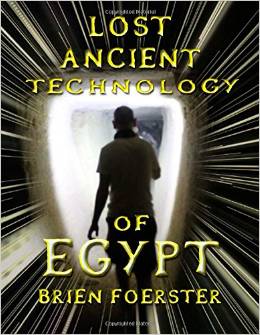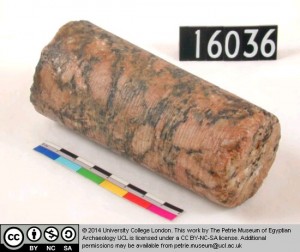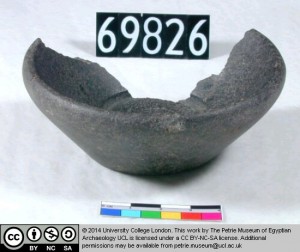In his book, Lost Technology of Ancient Egypt’, which looks at a variety of features across Egypt that suggest traces of technology in ancient times, Brien Foerster refers to two items that I hadn’t seen myself when visiting the Petrie Museum in London. (Petrie Museum Visit)
They are item number UC 16036, a granite core from a tubular drill hole, and item UC 69826 a basalt cup which the label says is turned with traces of a tube drill hole. Both are said to be from the Old Kingdom period and the granite core from the pyramids and Temples of Gizeh, presumably that means found somewhere on the Gizeh plateau.
Something is definitely very strange about these items. There are very few accounts to suggest that drilling machinery ever existed in ancient Egypt. That of course, superficially, would seem quite reasonable and rationale since no traces of it can be found, either in physical form or in any visual depictions. And yet, here, in these objects is seen once again what seems like incontrovertible evidence that some form of drilling ability must have existed. The disparity between items like this and the lack of evidence by which they were created is very frustrating. I’m continually surprised at how little this subject is thought about and dealt with. Numerous authors, scholars and those experts proclaimed as ‘Egyptologists’ seem to have no answer for this. Many books speak of the ancient Egyptians in monumental ways, full of praise for their achievements and culture, yet, this evidence of drilling, a feat which for the time would be absolutely amazing, is remarkably ignored. Foerster points out how the lathe would have been a natural development from the potter’s wheel. The archeologist Petrie himself recognised that a drill appeared to be used in the making of ancient Egyptian artifacts.


